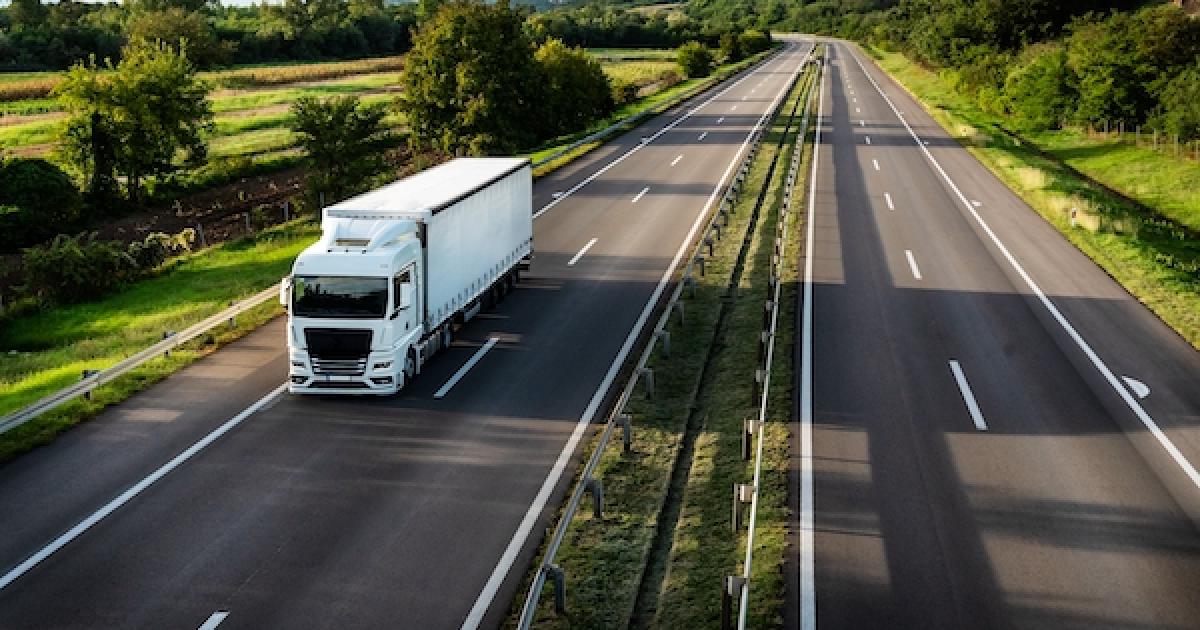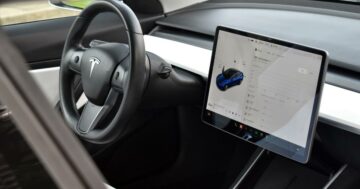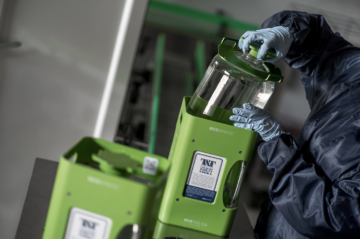
This article is sponsored by Environmental Defense Fund.
The Inflation Reduction Act (IRA) is a major win for American businesses, offering companies billions of dollars in tax credits, loans, and other incentives to accelerate progress toward environmental sustainability. Many analysts believe it is destined to be transformative—if those incentives are implemented efficiently and effectively.
In this series of articles, business leaders from top companies share how they are implementing IRA provisions and what advice they would give to other companies eager to capitalize on all the IRA has to offer.
BrightDrop is the tech company from General Motors (GM) that is transforming commercial delivery and logistics, and recently I spoke with Steve Hornyak, BrightDrop’s Chief Commercial Officer, to learn how the company is thinking about implementing the IRA.
Victoria Mills: In what ways were BrightDrop and GM advocates for the Inflation Reduction Act?
Steve Hornyak: Our team shared the importance of electric vehicle (EV) adoption with policymakers and how the IRA could help create new jobs and positively impact the economy. To reach a net zero future, we must electrify more than passenger vehicles. That’s the mission behind BrightDrop, a tech business within GM transforming commercial delivery and logistics for an all-electric future. To do that, we’re aiming to make the transition as seamless as possible for customers. That includes cost incentives, like those through the IRA, to help make the purchase of EVs more attainable for the average business owner. This is just one of many reasons we were supportive of the IRA.
This is important because delivery and logistics companies are racing to serve our growing demand for online shopping and delivery, with a volume of nearly sixty million packages per day. That’s 674 packages per second, or 162 parcels shipped per U.S. household per year. On a daily drive through our nation’s suburbs and cities, you see a constant stream of delivery vans in traffic right next to sedans and SUVs. While passenger EVs have become commonplace, electric light commercial vehicles (eLCVs) still turn heads. With a sales share of just 3.6%, about one-quarter of passenger cars, they are rarely sighted in the wild.
The transportation sector is one of the largest contributors to greenhouse gas (GHG) emissions in the United States, accounting for 29% of the total. Of that, medium and heavy-duty vehicles make up the second largest category, with 23% of emissions, while only comprising 5% of the vehicles on the road. Converting traditional commercial fleets to electric can have an outsized impact on reducing vehicle emissions and the IRA can help.
Mills: How has the IRA’s passage supported BrightDrop’s business objectives?
Hornyak: We’re at an inflection point where the economics of fleet electrification is enticing for the corporate balance sheet. Operational cost-savings paired with the IRA’s incentives can help expand commercial EV adoption. This provides an opportunity for fleets to make bigger, faster progress on impacting greenhouse gas (GHG) emissions.
At the same time, EV momentum has reached a tipping point. It’s projected that 53% of new vehicle purchases will be EVs by 2030. California will require that by 2035 100% of new cars and light trucks sold in the state will be zero-emission vehicles, including plug-in hybrid electric vehicles. Meanwhile, north of the border, Canada will require 100% of new light duty vehicles sold to be zero-emission vehicles by 2035, with one-fifth zero-emission by 2026.
We estimate operational savings of over $10,000 per BrightDrop Zevo 600 vehicle per year compared to a diesel alternative. Multiply that by a hundred vehicles, and the result is a potential million-dollar impact on the bottom line, creating immediate value for shareholders. Factor in the advancements in safety and efficiency built into both the software and hardware of commercial EVs, and there are additional potential savings: employee retention, liability prevention, and package handling costs. The list goes on.
Mills: Which IRA incentives does BrightDrop expect its customers to benefit from?
Hornyak: The IRA includes tax credits to help accelerate the adoption of EVs and strengthen American manufacturing and jobs. Companies like our parent company, General Motors, are already making historic investments to drive North American leadership in EV manufacturing and localize supply chains, creating thousands of jobs. And importantly, the clean energy credits available today include a $7,500 per unit tax credit for commercial vehicles like the BrightDrop Zevo. Recent policy models project that this incentive will result in a 2-3x increased share of EV trucks and vans in fleets by 2030, modeled against a scenario without the IRA incentives. State and Provincial incentives are also available for the BrightDrop Zevo. Customers in California, for example, may receive a voucher of up to $45,000. For fleet owners who calculate their expenses down to a T, the economic benefits make switching to an EV a no-brainer.
Mills: How does the IRA support progress toward your climate goals, and those of your customers?
Hornyak: GM plans to make its global products and operations carbon neutral by 2040 and eliminate tailpipe emissions from its new U.S. light duty vehicles by 2035. Like GM, many major corporations have pledged to reduce their emissions output to net zero.
Meeting ambitious climate commitments requires swift action to address the enormous carbon footprint left by transporting products across the global supply chain. To meet these bold climate commitments, corporate America’s carbon footprint needs to change—and fast. Fortunately, fleet electrification is a key part of our customer’s roadmaps to achieve their sustainability goals.
Commercial fleet owners have an opportunity to step boldly into a zero-tailpipe emissions future with positive impact on the bottom line. These economic incentives and lower operating costs can tip the scale for many businesses struggling to commit to EV conversion, and dramatically accelerate fleet electrification across industries.
Mills: What needs to happen to make sure the IRA delivers on its potential? What’s one piece of advice you’d like to share with other companies regarding the IRA?
Hornyak: The IRA aims high, but it is an ambitious initiative that will deliver clean energy jobs and accelerate the transition to a post-fossil-fuel era.
Now more than ever, corporate America has the power (and incentive) to realize the economic and environmental benefits of going all-electric. The opportunity for commercial delivery to lower carbon emissions and operating costs is real and immediate. It’s an offer that corporate America—and our environment—can’t afford to refuse.
Steve Hornyak is the chief commercial officer at BrightDrop, the tech company from General Motors transforming commercial delivery and logistics.
- SEO Powered Content & PR Distribution. Get Amplified Today.
- PlatoData.Network Vertical Generative Ai. Empower Yourself. Access Here.
- PlatoAiStream. Web3 Intelligence. Knowledge Amplified. Access Here.
- PlatoESG. Automotive / EVs, Carbon, CleanTech, Energy, Environment, Solar, Waste Management. Access Here.
- PlatoHealth. Biotech and Clinical Trials Intelligence. Access Here.
- ChartPrime. Elevate your Trading Game with ChartPrime. Access Here.
- BlockOffsets. Modernizing Environmental Offset Ownership. Access Here.
- Source: https://www.greenbiz.com/article/how-ira-enabling-large-scale-fleet-electrification
- :has
- :is
- :where
- $UP
- 000
- 2026
- 2030
- 500
- a
- About
- accelerate
- Accounting
- Achieve
- across
- Act
- Action
- Additional
- address
- Adoption
- advancements
- advice
- advocates
- afford
- against
- Aiming
- aims
- All
- all-electric
- already
- also
- alternative
- ambitious
- america
- American
- an
- Analysts
- and
- ARE
- article
- articles
- AS
- At
- Attainable
- available
- average
- Balance
- Balance Sheet
- BE
- because
- become
- behind
- believe
- benefit
- benefits
- bigger
- billions
- bold
- border
- both
- Bottom
- built
- business
- Business Leaders
- business owner
- businesses
- but
- by
- calculate
- california
- CAN
- Canada
- capitalize
- carbon
- carbon emissions
- carbon footprint
- cars
- Category
- CFM
- chain
- chains
- chief
- Cities
- clean energy
- Climate
- CNBC
- commercial
- commit
- commitments
- Companies
- company
- compared
- comprising
- constant
- contributors
- Conversion
- converting
- Corporate
- Corporations
- Cost
- Costs
- could
- create
- Creating
- credit
- Credits
- Customers
- daily
- Defense
- deliver
- delivers
- delivery
- Demand
- destined
- diesel
- do
- does
- dollars
- DOT
- down
- dramatically
- drive
- drive through
- eager
- Economic
- Economics
- economy
- EDF
- effectively
- efficiency
- efficiently
- Electric
- electric vehicle
- electric vehicles
- eliminate
- Emissions
- Employee
- enabling
- energy
- enormous
- enticing
- environmental
- Environmental Sustainability
- EPA
- Era
- estimate
- EV
- EVER
- evs
- example
- Expand
- expect
- expenses
- factor
- FAST
- faster
- FLEET
- Footprint
- For
- Fortunately
- from
- future
- GAS
- General
- General Motors
- GHG
- Give
- Global
- GM
- Goals
- Goes
- going
- greenhouse gas
- Growing
- Handling
- happen
- Hardware
- Have
- heads
- heavy-duty
- help
- High
- historic
- household
- How
- HTML
- HTTPS
- hundred
- Hybrid
- i
- IEA
- immediate
- Impact
- impacting
- implemented
- implementing
- importance
- important
- in
- Incentive
- Incentives
- include
- includes
- Including
- increased
- industries
- inflation
- Inflection
- Inflection Point
- Initiative
- into
- Investments
- IRA
- IT
- ITS
- Jobs
- jpg
- just
- just one
- Key
- large-scale
- largest
- leaders
- Leadership
- LEARN
- left
- liability
- light
- like
- Line
- List
- Loans
- logistics
- lower
- major
- make
- Making
- manufacturing
- many
- May..
- Meanwhile
- medium
- Meet
- million
- Mission
- models
- Momentum
- more
- Motors
- must
- Nations
- nearly
- needs
- net
- Neutral
- New
- next
- North
- objectives
- of
- offer
- offering
- Officer
- on
- ONE
- online
- online shopping
- only
- operating
- operational
- Operations
- Opportunity
- or
- Other
- our
- output
- over
- owner
- owners
- package
- packages
- paired
- parent company
- part
- passage
- per
- piece
- plans
- plato
- Plato Data Intelligence
- PlatoData
- Point
- policy
- policymakers
- positive
- possible
- potential
- power
- Prevention
- Products
- Progress
- project
- protocol
- provides
- Provincial
- purchase
- purchases
- racing
- rarely
- reach
- reached
- real
- realize
- reasons
- receive
- recent
- recently
- reduce
- reducing
- reduction
- regarding
- require
- requires
- result
- retention
- right
- roadmaps
- s
- Safety
- sales
- same
- Savings
- Scale
- scenario
- seamless
- Second
- sector
- sedans
- see
- Series
- serve
- Share
- shared
- Shareholders
- sheet
- shipped
- Shopping
- Software
- sold
- Sponsored
- State
- States
- Step
- Steve
- Still
- stream
- Strengthen
- Struggling
- supply
- supply chain
- Supply chains
- support
- Supported
- supportive
- sure
- Sustainability
- SUVs
- SWIFT
- T
- tax
- tax credit
- team
- tech
- Tech Company
- than
- that
- The
- The State
- their
- There.
- These
- they
- Thinking
- this
- those
- thousands
- Through
- time
- tip
- Tipping
- Tipping point
- to
- today
- top
- toward
- traditional
- traffic
- transforming
- transition
- transportation
- transporting
- Trucks
- TURN
- u.s.
- unit
- United
- United States
- value
- vehicle
- Vehicles
- volume
- ways
- we
- were
- What
- which
- while
- WHO
- will
- win
- with
- within
- without
- would
- would give
- year
- you
- Your
- zephyrnet
- zero










